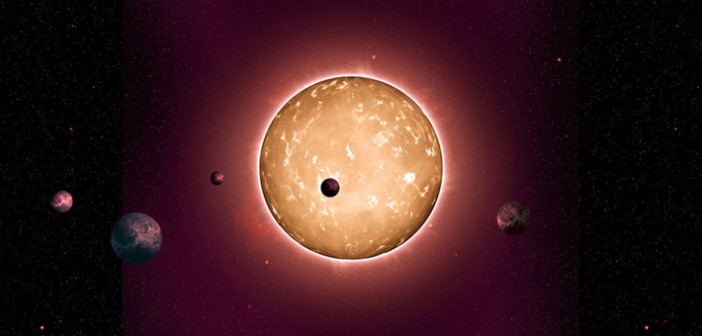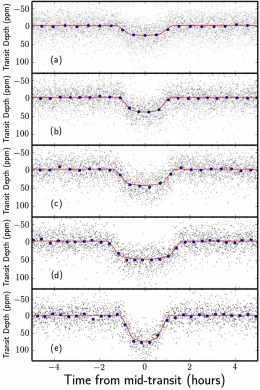Editor’s Note: In these last two weeks of 2015, we’ll be looking at a few selections from among the most-downloaded papers published in AAS journals this year. The usual posting schedule will resume after the AAS winter meeting.
An Ancient Extrasolar System with Five Sub-Earth-Size Planets
Published January 2015
Main takeaway:
A team led by Tiago Campante (University of Birmingham, Aarhus University) reported Kepler spacecraft observations of Kepler-444, a system of five transiting exoplanets around a metal-poor, Sun-like star. All five planets are sub-Earth-sized. Furthermore, the system is measured to be over 11 billion years old — making this the oldest known system of terrestrial-size planets.Why it’s interesting:
While gas-giant planets show a preference for forming around metal-rich stars, smaller planets appear to be less picky. This suggests that Earth-size planets may have been able to form at earlier times in the universe’s history, when metals were scarcer. The determination that Kepler-444 is 11.2 billion years old confirms that terrestrial-size planets have been able to form throughout most of the universe’s 13.8 billion year history.
Awesome technical achievement:
The age of the Kepler-444 system was determined from asteroseismology of the host star. The fact that we can measure oscillations in the interior of this ancient star located 116 light-years away — and use this to determine its age to a precision of 9%! — is a remarkable achievement made possible by 4 years of continuous, high-quality observations of the system.
Citation
T. L. Campante et al 2015 ApJ 799 170. doi:10.1088/0004-637X/799/2/170

